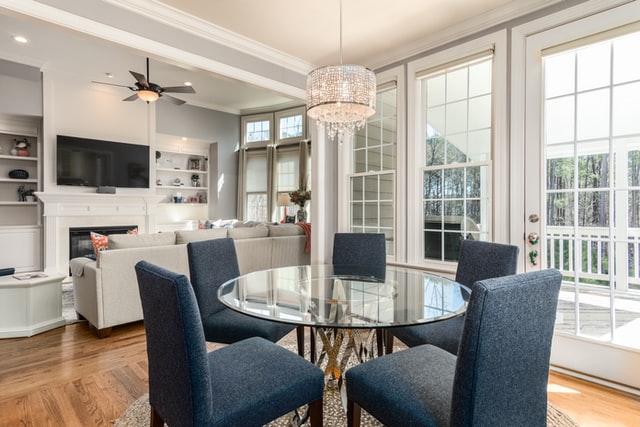There are many factors to consider when you are buying window treatments for your home. One of the most important is taking a close look at what type of windows you have! Ascertain kinds of windows work best with particular window coverings. We thought it would be a great idea to tap into the design experts over at Stoneside regarding the best tips and tricks.
Design Styles Window Treatments
Casement Windows
Casement windows are stylish and different from traditional single-hung or double-hung windows in that they are hinged on one side and open in or out with the turn of a crank. Generally, window treatments that hang above the window, outside of the casing, are best.
For stationary or picture windows, vertical blinds are exceptional at covering large spaces and can be found in various colors and finishes for design flexibility. Another good choice is solar shades since picture windows let in a lot of light, which means there is much UV exposure.
Single-Hung and Double-Hung Windows
You’ll find these traditional windows in many homes, so chances are you have at least one room with them. If you have single-hung windows, you have many options to choose from because every type of window covering is a great match here. Double-hung windows don’t have as much depth because both sashes move up or down, so wall-mounted shades, blinds, or drapes can be an excellent choice. Shades have the bonus of top-down/bottom-up functionality, allowing you to move them from the top or bottom just as you do the windows themselves.
Bay Windows
These elegant windows are often the centerpiece of a room. Custom window coverings should be equally striking with a dramatic sense of scale. You can beautifully highlight the bones of a bay window with Roman shades crafted from a rich fabric. Drapery panels are a graceful addition to a bay window and work well on their own or paired with shades or blinds. For the latter, plantation-style shutters pack a visual punch. Outside-mounted window coverings are often an ideal choice for bay windows in order to preserve their clean lines.
Awning Windows
Like casement windows, the awning styles are also hinged—in this case, however, they are hinged at the top so they can be cranked open slightly to let in the fresh air. Roller shades or blinds are easily adaptable to awning windows. Of course, because of the location of the hinges at the top, window treatments need to be hung above the window on the wall or ceiling.
Geometric-Shaped Windows
Homes with unusually shaped windows—triangular, hexagonal, arched—require specific window coverings that aren’t one size fits all. This is when custom window coverings come in handy, especially with a trustworthy retailer who handles all the measurements and orders to ensure an accurate result.
Slider Windows and Sliding Doors
The benefit of sliders is that they let in a lot of natural light and can create the seamless blending of indoor and outdoor space, making your home feel more expansive. Of course, that means you need extra-large window treatments to control the light and privacy when needed. Vertical cellular blinds are more than up to the task. Offering desirable coverage and energy efficiency, vertical cellular blinds come in opacity levels from sheer to blackout. Wide-width sheer drapery can also be a good choice for slider windows and sliding doors.
Other Articles You May Enjoy
OUTDOOR LIVING WITH SLIDING PATIO DOORS
2021’S HOTTEST DESIGN TRENDS
KEY DESIGN ELEMENTS OF MODERN BEDROOM SETS




